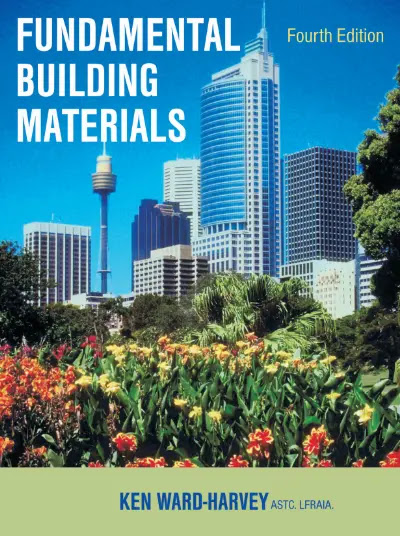Download Fundamentals Building Materials Fourth Edition By Ken Ward-Harvey Easily In PDF Format For Free.
People Involved In The Building Industry Are Confronted With A Great Array Of Materials Made From Natural Resources Such As Timber, And Manufactured Articles Such As Bricks And Metals. Many Of These Have Been Used Effectively For Centuries, But Increasingly Newly Developed Materials And Systems For Construction Come On The Market And Need To Be Evaluated Before They Can Be Effectively Incorporated And Stand The Long Term Uses Required Of Buildings.
Some Proven Materials Can Become Unpopular Due To Labour Costs, Or Banned Due To Public Health Risks, As With Lead Based Paints And Asbestos Fibres In The Latter Half Of The 20th Century. Traditionally Much Building Materials Knowledge Was Acquired Slowly Within The Apprenticeship Or Pupilage Systems, But Modern Commercial Pressures And Rapid Changes In The 20th Century Have Shown These Systems To Be Too Slow. This Book Has Been Prepared By An Architect With Fifty Years Experience Of Practice And Teaching, In An Attempt To Provide A Wide Ranging Introduction To This Very Broad Subject.
Emphasis Is Placed On Visual Identification Of Materials Through Photographs Of Typical Products. Understanding Can Only Be Developed Once Visual Identification Is Established, And This Is Basic To All Communication Within The Industry. Personal Observation Of Material Uses, Performance And Case Studies Is Essential.
The Building Code Of Australia (BCA) Was Introduced In 1988 To Supersede The Various State Building Regulations, And Simplify Interpretation Of The Rules For Manufacturers And People Who Often Work Across State Boundaries. Amendments Are Still Being Added. Due To The Wide Range Of Australian Climatic Conditions From Cyclonic Winds, Heat And Humidity; To Dry Desert; Alpine Snowfields; And The Favoured Pleasant Coastal Littoral, Some Special Clauses Had To Be Included To Cover These Extremely Varied, Conditions.
Generally Speaking Australia Now Works To A Set Of National Methods Of Construction. We Also Have Available A Standard Specification Called NATSPEC. This Book Should Also Become A Desk Reference For Professionals; As Further Study Is Assisted By The Summaries And Technical References Listed For Each Chapter.
While The Majority Of These Are Of Australian Origin, British, New Zealand And Other Publications Are Mentioned. The Rapid Exchange Of Goods And Information Now Possible Has Led To Many Building Materials Being Transported Across The World, And Foreign Research And Standards Being Used In Their Assessment. Serious Concerns Have Been Formally Expressed By Australian National Bodies Involved With Building Performance And Maintenance Regarding Widespread Evidence Of Failures And Breakdowns Due To Lack Of Understanding Of Material Characteristics.

